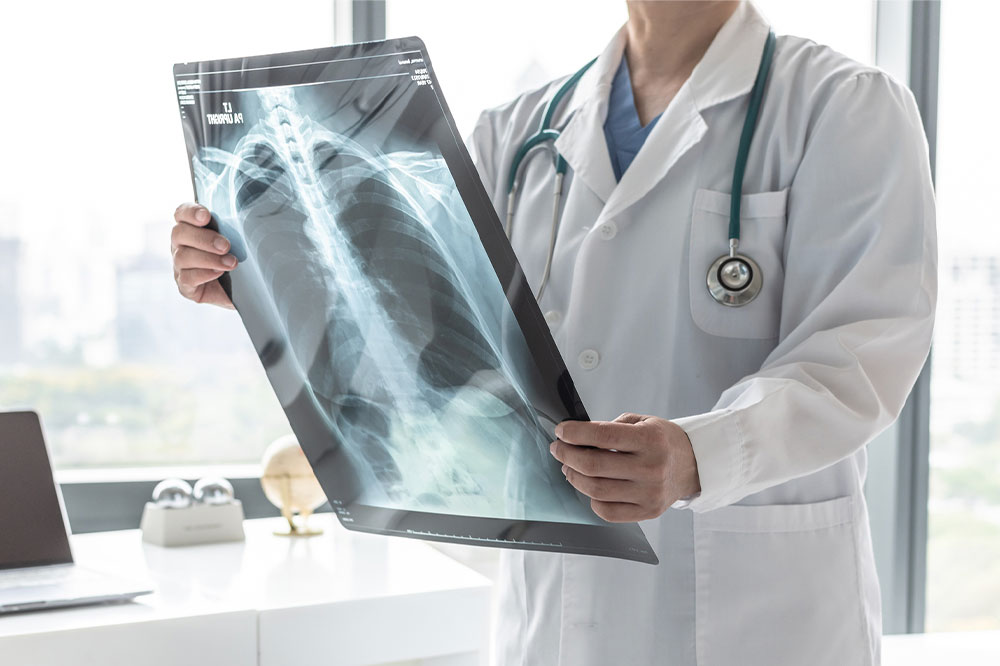
Symptoms, diagnosis, and management of acute respiratory distress syndrome
Acute respiratory distress syndrome is a severe condition that affects millions of people worldwide. It is depicted by the rapid onset of severe shortness of breath and low oxygen levels in the blood. It can be caused by various factors. Let’s take a closer look at what causes the condition and how to recognize its signs and symptoms and also learn about the potential treatments for acute respiratory distress syndrome.
What is acute respiratory distress syndrome?
It is a severe and often fatal type of respiratory failure. It occurs when fluid builds up in the tiny air sacs of the lungs, causing them to become stiff and unable to exchange oxygen adequately.
It can develop quickly and usually occurs in those who have recently been severely injured, had a chronic infection, or undergone major surgery. It can also occur in people who have experienced severe trauma, such as burns, near-drowning, long-term health conditions, or an illness that triggers a massive inflammatory response in the lungs.
In some cases, the syndrome may also be caused by a direct injury to the lungs, such as aspiration, inhalation of toxins, or infections. Moreover, it can be led by a systemic inflammatory response that affects one’s entire body.
Since acute respiratory distress syndrome can be fatal, early diagnosis is essential for on-time treatment. If one experiences any of the symptoms, it is crucial to seek medical attention immediately.
Symptoms of acute respiratory distress syndrome
Acute respiratory distress syndrome can cause a wide range of symptoms, from mild to severe. The severity of the symptoms will depend on the severity of the condition. Below are some of the common symptoms associated with the condition:
- Shortness of breath
- Rapid breathing
- Difficulty breathing
- Chest pain
- Low oxygen levels in the blood
In addition to physical symptoms, the syndrome can cause psychological conditions such as anxiety and depression.
Diagnosing acute respiratory distress syndrome
It is essential for doctors to accurately identify the disease to begin the right course of treatment and improve one’s health. Here are the steps for diagnosing the condition.
- Medical history
A patient’s medical history can help narrow down the cause of the condition. The doctor will look for illnesses that can lead to acute respiratory distress syndrome, such as infections, sepsis, inhalation of toxic substances, major trauma, or near-drowning. - Physical examination
The doctor will check the patient’s vital signs, which include heart rate, respiratory rate, and blood pressure. They may also determine if there are any abnormal sounds or fluids in the patient’s chest. - Imaging tests
Chest X-rays and CT scans can provide detailed information about the functioning of one’s lungs and possible complications. These tests are used to look for signs of lung damage and other conditions that could be contributing to the development of acute respiratory distress syndrome. - Blood tests
Blood tests can measure the amount of oxygen in the patient’s blood and detect possible infections or inflammation. - Echocardiogram (ECG)
An ECG test can determine if the heart is functioning properly. It can also detect any signs of congestive heart failure or pulmonary hypertension.
Treatment options
Depending on the diagnosis, immediate medical attention is required to stabilize the patient’s condition, reduce the symptoms, and improve their overall health. The most common treatments include:
- Oxygen therapy
This involves providing supplemental oxygen to the patient, as well as using devices to assist with breathing, such as mechanical ventilation and non-invasive positive pressure ventilation. In some cases, other treatments may be necessary, such as extracorporeal membrane oxygenation (ECMO), a type of life support that uses a device to provide oxygen. - Supplements
Doctors may prescribe supplements to help reduce inflammation and swelling in the lungs, as well as treat infections and reduce the workload of the heart.
It is important to remember that recovery can take time and may require multiple treatments and ongoing monitoring by healthcare professionals. It is also essential to follow any instructions given by the doctor and to rest well, eat healthily, and remain physically active to promote full recovery.




